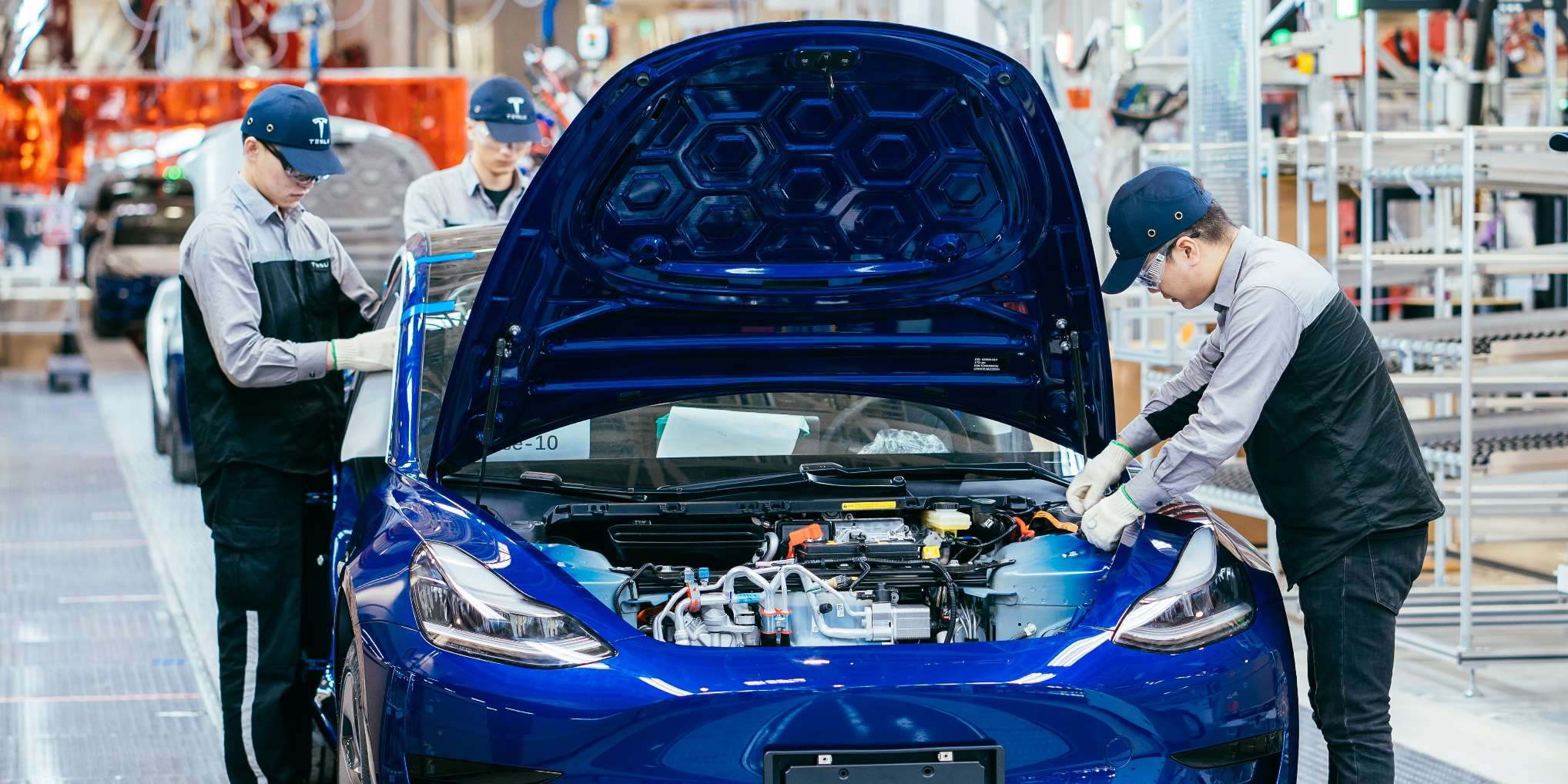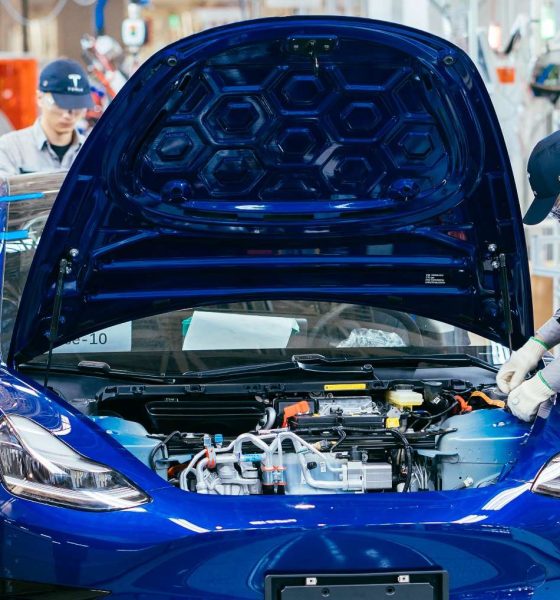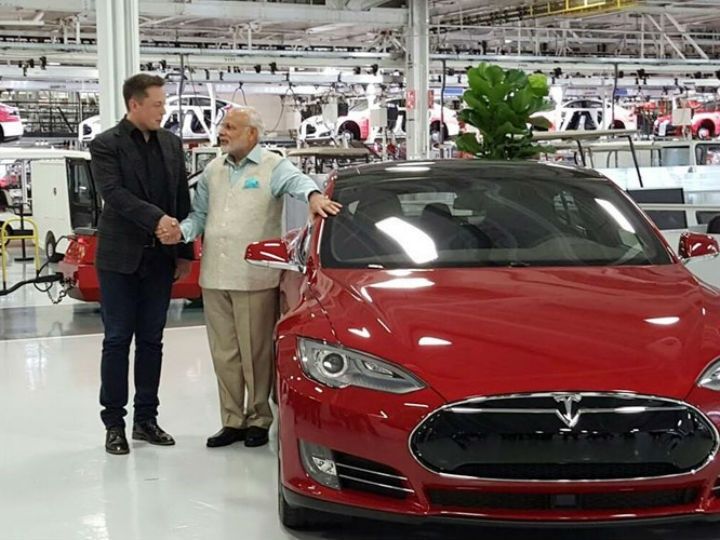

News
Why Tesla’s road in India may end before it even starts
This is a preview from our weekly newsletter. Each week I go ‘Beyond the News’ and handcraft a special edition that includes my thoughts on the biggest stories, why it matters, and how it could impact the future.
For years, Indian citizens have pleaded with Tesla CEO Elon Musk about the possibility of the electric automaker building and delivering cars in the country. India, a large landmass that 1.366 billion people call home, has less than 1% of its 30 million cars being of an electric nature, the most sustainable way to operate a vehicle. However, Tesla aims to change that with an imminent entrance into India’s market. The problem is, Tesla’s road in India may end before it even begins, which would be a massive blow to the company and its supporters in the country, as Tesla fans have waited several years for any indication that the car company would finally make an appearance in their section of the world. But, strict regulations and inside political interests are halting the possibility, and it has people wondering whether the world’s leading electric car company will ever make it to the Indian automotive market.
Many of you who read Teslarati on a daily basis know that we have been tracking the situation in India since the early days. In fact, one of my first articles of 2021, while I was recovering from COVID-19 in January, was about the potential that Tesla had in India’s markets. Additionally, it seemed that some potential customers would be ready to order their first all-electric cars from the Silicon Valley-based electric car company by the time Q2 rolled around. However, these pieces of outlook from Musk were not met because the Indian government has shut down any attempt Tesla has made toward getting their products in the country without the hefty import duties. Unfortunately, it doesn’t seem as if they will be going away soon, either, as Prime Minister Narendra Modi, who has heavily supported the idea of local manufacturing efforts, will not be forced to leave his post or enter another election until 2024.
While local manufacturing is something Americans take a lot of pride in, especially with cars, there are undoubtedly advantages to building things domestically. First, companies must hire workers in the country that the business is stationed in. Next, the increase of manufacturing jobs not only improves the American economy, but it also provides job security for the millions of employees that are on assembly lines 40 hours (or more) a week. There are a lot of strengths in manufacturing things locally, but there is also room for foreign entities to bring their products into a market, especially if they can benefit a foreign economy like it does a domestic one.
Musk with Modi in 2015
This is something Tesla argued in its proposal letter to the Indian government a few weeks ago when it requested a reduction in import duties. The increase in Tesla imports would actually assist the country in developing a charging infrastructure, which would supply jobs to the energy sector and provide cleaner transportation options in a country where the climate and environment struggle heavily with smog and emissions. Additionally, Tesla would need a dedicated Service Center in several locations as India is a large country. Not to mention, showrooms would also provide some employment opportunities.
Musk has said that Tesla will not bring a Gigafactory to India without some sort of data that would support healthy demand, something that is obviously needed to justify building a near-billion dollar production plant in India. Doing this through imports is a tremendous idea, but 60% import taxes on sub-$40k vehicles, and 100% duties on $40,000 and up vehicles just will not get this done. Plain and simple. There needs to be some movement on the Indian government’s end.
However, the Indian politicians fail to realize that the economic and environmental advantages to having EVs in the country will be a better move long term. Instead, they fail to budge or even consider reducing import duties of any kind, at least to this point, which appears to discourage Tesla’s requests to enter the market. It would be a shame if no solution can be reached after this problem because I believe that the environmental impacts alone will be something that not only the Indian people will enjoy, but the people of the world will begin to see eventually. As the air begins to clear and the smog disperses, there could be a relative ease on the strong relationship with gas and oil India has. Sustainable energy could make its way to India within the next few years, and Tesla could see the potential for its biggest Gigafactory yet in India.
Think about the economic benefits a large-scale production facility could provide. Not only would it produce well-paying jobs, but it would also create a lot of them.
There are so many benefits for both Tesla and India if a deal can be worked out. But can it? In my opinion, Tesla may be better off delaying the India operation for another few years, when a fresh administration and new ideas can be thrown around about Tesla entering the market. It seems, for now, there won’t be much of a possibility, and Tesla may be better off expanding its efforts in the UK or elsewhere.
With that being said, I would love to hear how you feel about this issue. Is Tesla wasting its time trying to get things going in India? Should it try again in a few years? Do you feel progress can be made? Why or why not? If not India, then where should Tesla consider a new Gigafactory?
A big thanks to our long-time supporters and new subscribers! Thank you.
I use this newsletter to share my thoughts on what is going on in the Tesla world. If you want to talk to me directly, you can email me or reach me on Twitter. I don’t bite, be sure to reach out!

Elon Musk
Elon Musk’s X will start using a Tesla-like software update strategy
The initiative seems designed to accelerate updates to the social media platform, while maintaining maximum transparency.

Elon Musk’s social media platform X will adopt a Tesla-esque approach to software updates for its algorithm.
The initiative seems designed to accelerate updates to the social media platform, while maintaining maximum transparency.
X’s updates to its updates
As per Musk in a post on X, the social media company will be making a new algorithm to determine what organic and advertising posts are recommended to users. These updates would then be repeated every four weeks.
“We will make the new 𝕏 algorithm, including all code used to determine what organic and advertising posts are recommended to users, open source in 7 days. This will be repeated every 4 weeks, with comprehensive developer notes, to help you understand what changed,” Musk wrote in his post.
The initiative somewhat mirrors Tesla’s over-the-air update model, where vehicle software is regularly refined and pushed to users with detailed release notes. This should allow users to better understand the details of X’s every update and foster a healthy feedback loop for the social media platform.
xAI and X
X, formerly Twitter, has been acquired by Elon Musk’s artificial intelligence startup, xAI last year. Since then, xAI has seen a rapid rise in valuation. Following the company’s the company’s upsized $20 billion Series E funding round, estimates now suggest that xAI is worth tens about $230 to $235 billion. That’s several times larger than Tesla when Elon Musk received his controversial 2018 CEO Performance Award.
As per xAI, the Series E funding round attracted a diverse group of investors, including Valor Equity Partners, Stepstone Group, Fidelity Management & Research Company, Qatar Investment Authority, MGX, and Baron Capital Group, among others. Strategic partners NVIDIA and Cisco Investments also continued support for building the world’s largest GPU clusters.
News
Tesla FSD Supervised wins MotorTrend’s Best Driver Assistance Award
The decision marks a notable reversal for the publication from prior years, with judges citing major real-world improvements that pushed Tesla’s latest FSD software ahead of every competing ADAS system.

Tesla’s Full Self-Driving (Supervised) system has been named the best driver-assistance technology on the market, earning top honors at the 2026 MotorTrend Best Tech Awards.
The decision marks a notable reversal for the publication from prior years, with judges citing major real-world improvements that pushed Tesla’s latest FSD software ahead of every competing ADAS system. And it wasn’t even close.
MotorTrend reverses course
MotorTrend awarded Tesla FSD (Supervised) its 2026 Best Tech Driver Assistance title after extensive testing of the latest v14 software. The publication acknowledged that it had previously criticized earlier versions of FSD for erratic behavior and near-miss incidents, ultimately favoring rivals such as GM’s Super Cruise in earlier evaluations.
According to MotorTrend, the newest iteration of FSD resolved many of those shortcomings. Testers said v14 showed far smoother behavior in complex urban scenarios, including unprotected left turns, traffic circles, emergency vehicles, and dense city streets. While the system still requires constant driver supervision, judges concluded that no other advanced driver-assistance system currently matches its breadth of capability.
Unlike rival systems that rely on combinations of cameras, radar, lidar, and mapped highways, Tesla’s FSD operates using a camera-only approach and is capable of driving on city streets, rural roads, and freeways. MotorTrend stated that pure utility, the ability to handle nearly all road types, ultimately separated FSD from competitors like Ford BlueCruise, GM Super Cruise, and BMW’s Highway Assistant.
High cost and high capability
MotorTrend also addressed FSD’s pricing, which remains significantly higher than rival systems. Tesla currently charges $8,000 for a one-time purchase or $99 per month for a subscription, compared with far lower upfront and subscription costs from other automakers. The publication noted that the premium is justified given FSD’s unmatched scope and continuous software evolution.
Safety remained a central focus of the evaluation. While testers reported collision-free operation over thousands of miles, they noted ongoing concerns around FSD’s configurable driving modes, including options that allow aggressive driving and speeds beyond posted limits. MotorTrend emphasized that, like all Level 2 systems, FSD still depends on a fully attentive human driver at all times.
Despite those caveats, the publication concluded that Tesla’s rapid software progress fundamentally reshaped the competitive landscape. For drivers seeking the most capable hands-on driver-assistance system available today, MotorTrend concluded Tesla FSD (Supervised) now stands alone at the top.
News
Elon Musk’s Grokipedia surges to 5.6M articles, almost 79% of English Wikipedia
The explosive growth marks a major milestone for the AI-powered online encyclopedia, which was launched by Elon Musk’s xAI just months ago.

Elon Musk’s Grokipedia has grown to an impressive 5,615,201 articles as of today, closing in on 79% of the English Wikipedia’s current total of 7,119,376 articles.
The explosive growth marks a major milestone for the AI-powered online encyclopedia, which was launched by Elon Musk’s xAI just months ago. Needless to say, it would only be a matter of time before Grokipedia exceeds English Wikipedia in sheer volume.
Grokipedia’s rapid growth
xAI’s vision for Grokipedia emphasizes neutrality, while Grok’s reasoning capabilities allow for fast drafting and fact-checking. When Elon Musk announced the initiative in late September 2025, he noted that Grokipedia would be an improvement to Wikipedia because it would be designed to avoid bias.
At the time, Musk noted that Grokipedia “is a necessary step towards the xAI goal of understanding the Universe.”
Grokipedia was launched in late October, and while xAI was careful to list it only as Version 0.1 at the time, the online encyclopedia immediately earned praise. Wikipedia co-founder Larry Sanger highlighted the project’s innovative approach, noting how it leverages AI to fill knowledge gaps and enable rapid updates. Netizens also observed how Grokipedia tends to present articles in a more objective manner compared to Wikipedia, which is edited by humans.
Elon Musk’s ambitious plans
With 5,615,201 total articles, Grokipedia has now grown to almost 79% of English Wikipedia’s article base. This is incredibly quick, though Grokipedia remains text-only for now. xAI, for its part, has now updated the online encyclopedia’s iteration to v0.2.
Elon Musk has shared bold ideas for Grokipedia, including sending a record of the entire knowledge base to space as part of xAI’s mission to preserve and expand human understanding. At some point, Musk stated that Grokipedia will be renamed to Encyclopedia Galactica, and it will be sent to the cosmos.
“When Grokipedia is good enough (long way to go), we will change the name to Encyclopedia Galactica. It will be an open source distillation of all knowledge, including audio, images and video. Join xAI to help build the sci-fi version of the Library of Alexandria!” Musk wrote, adding in a later post that “Copies will be etched in stone and sent to the Moon, Mars and beyond. This time, it will not be lost.”








